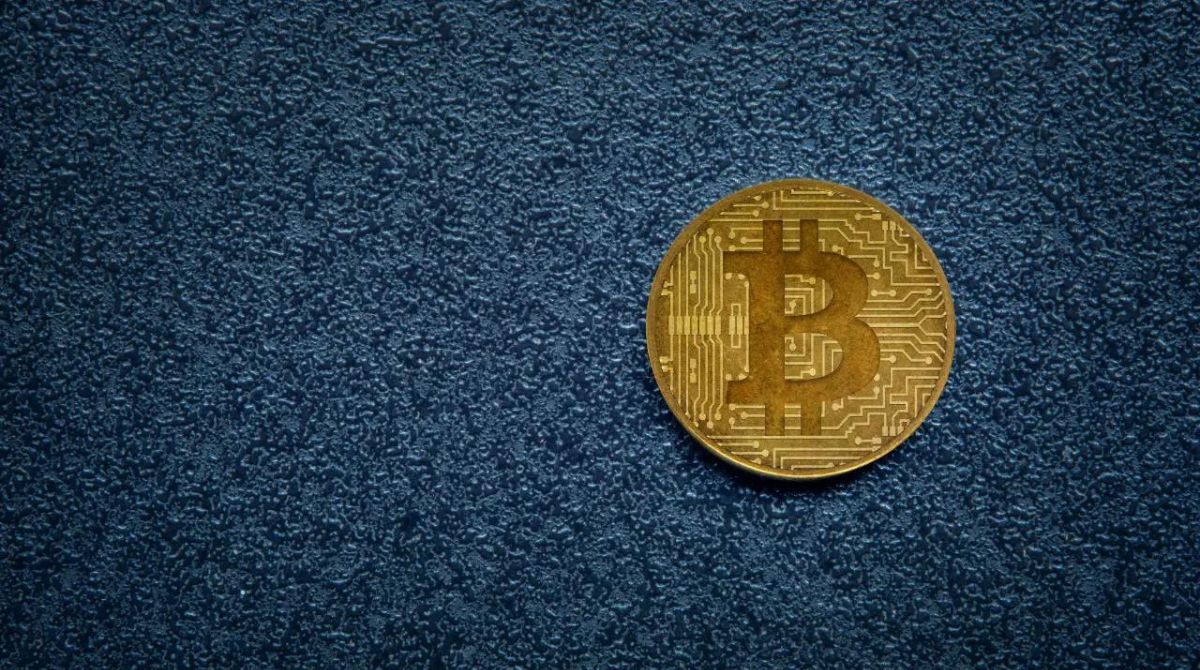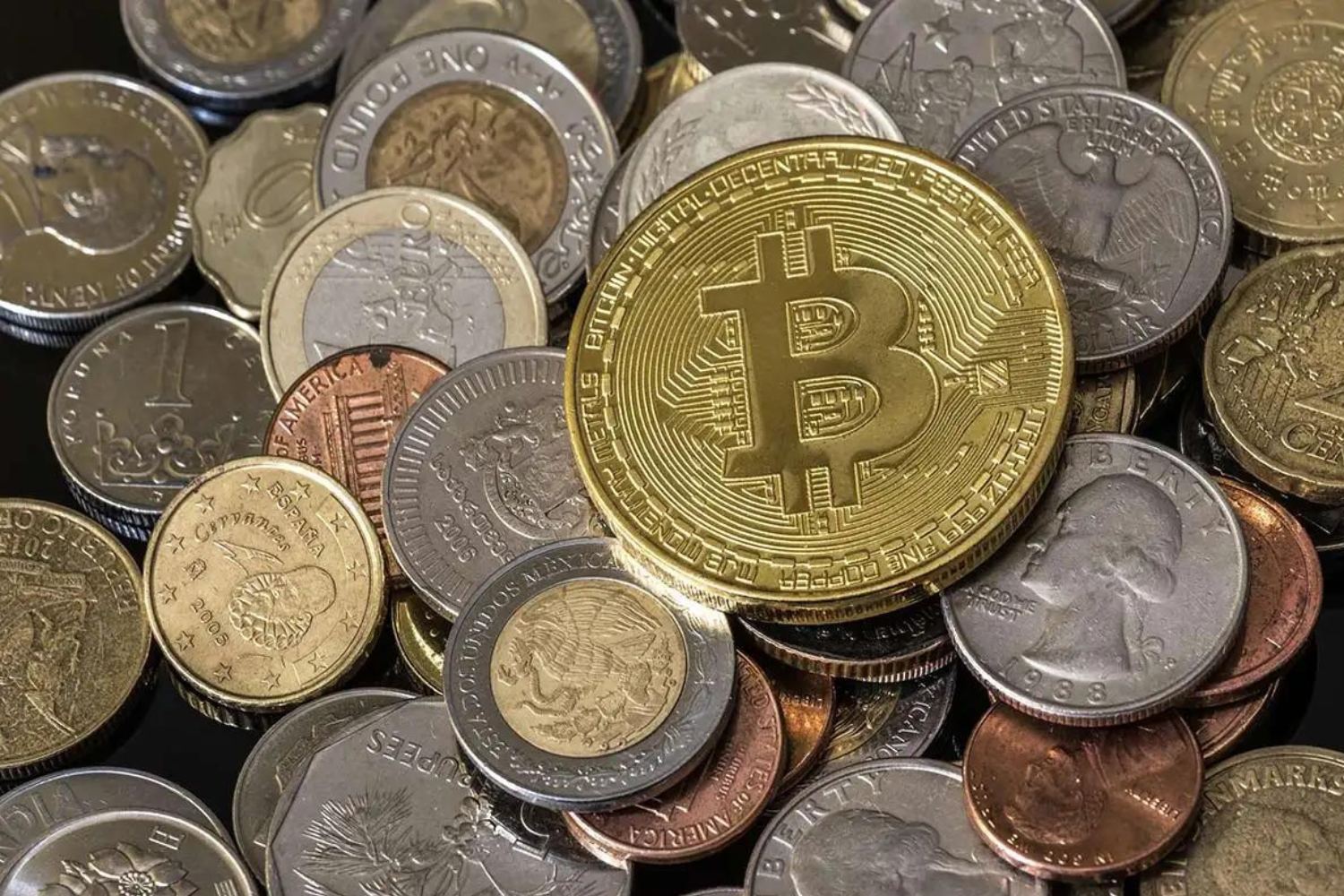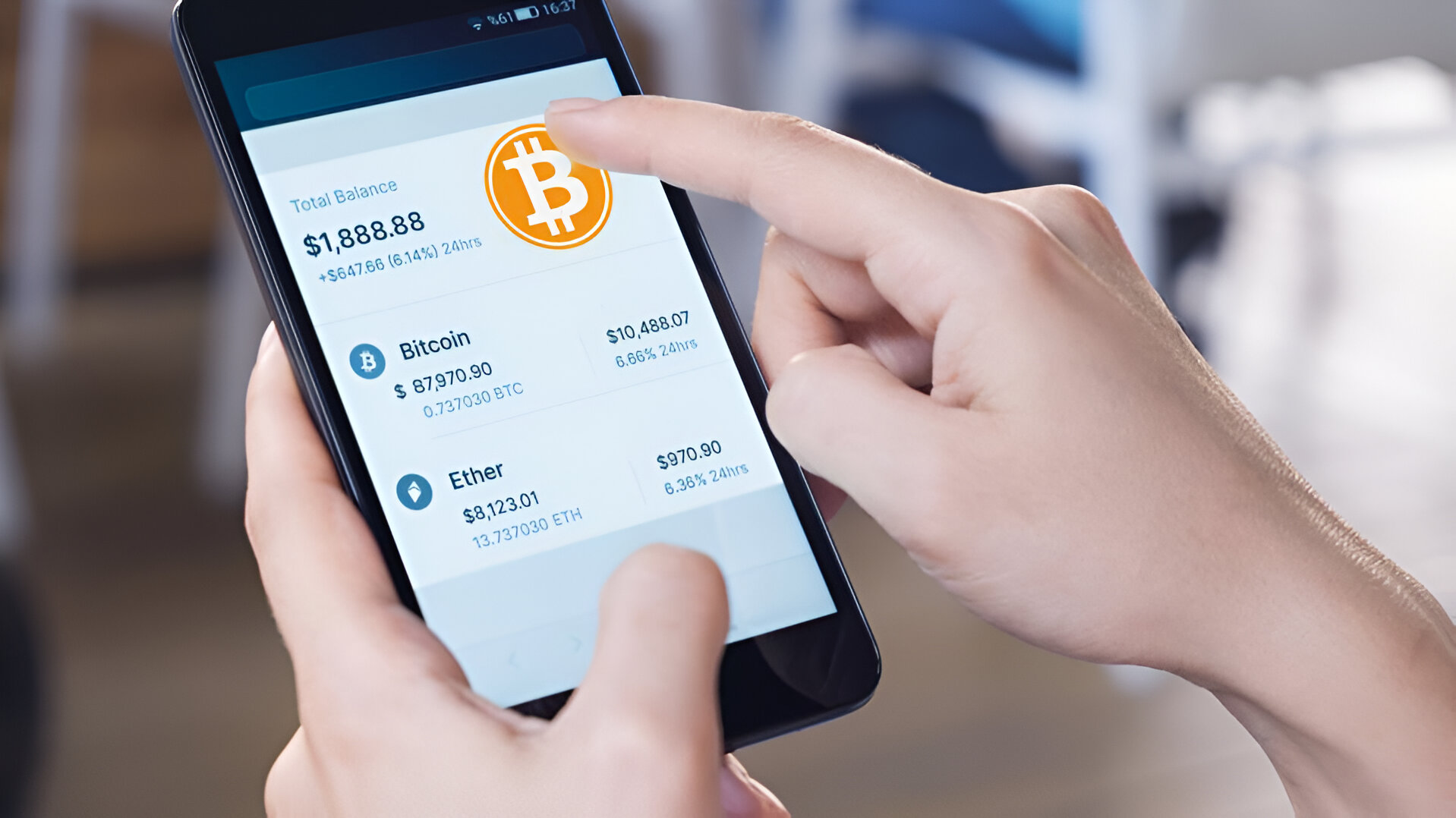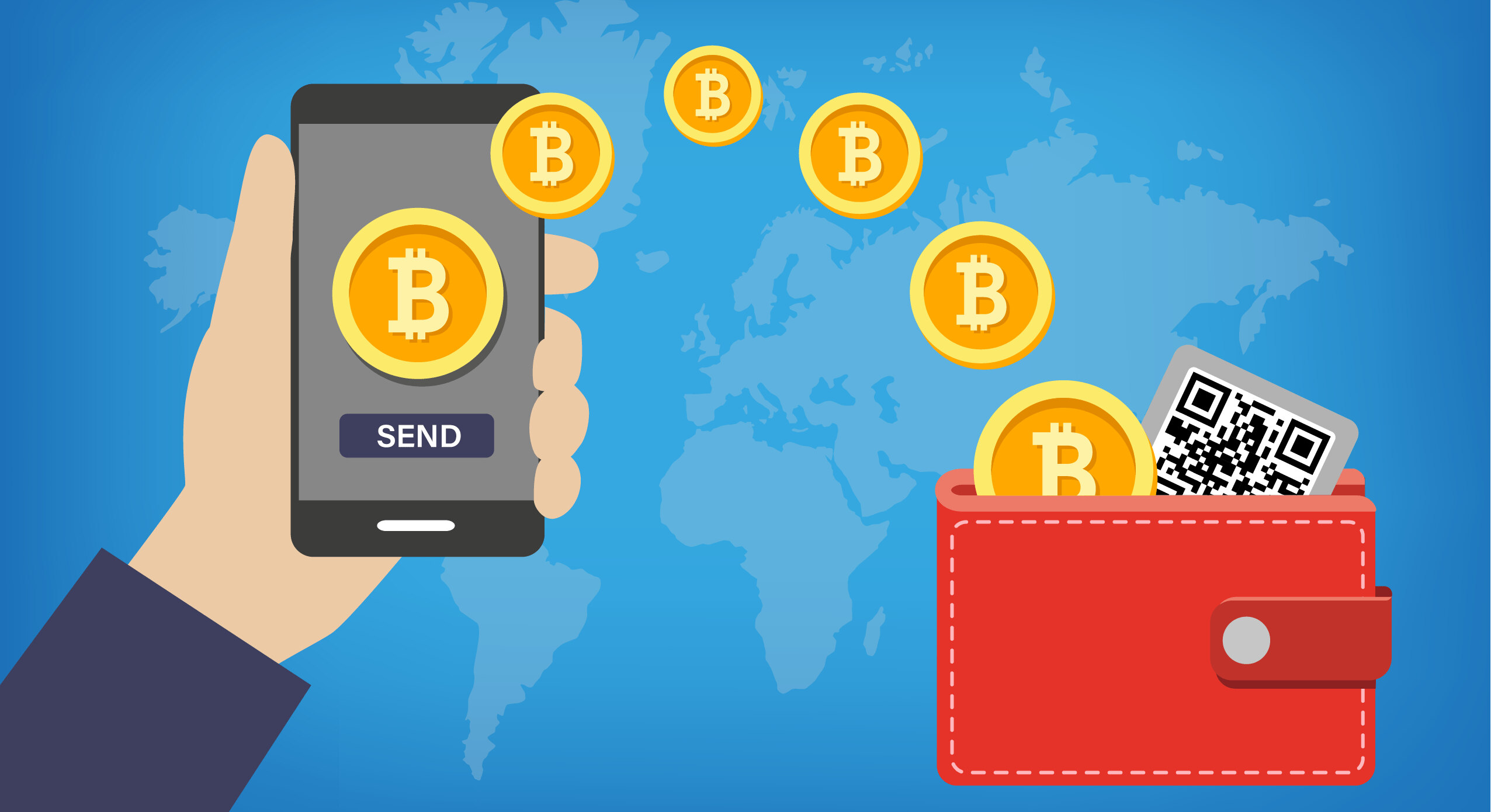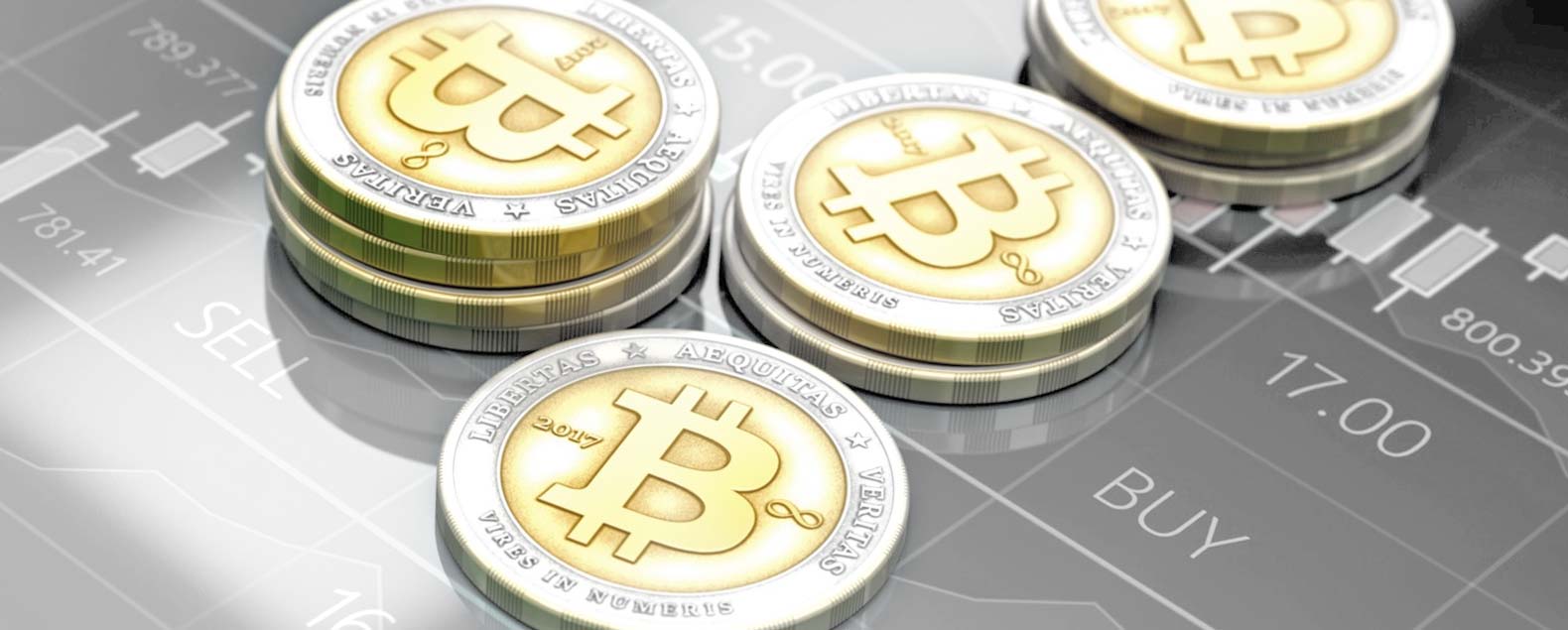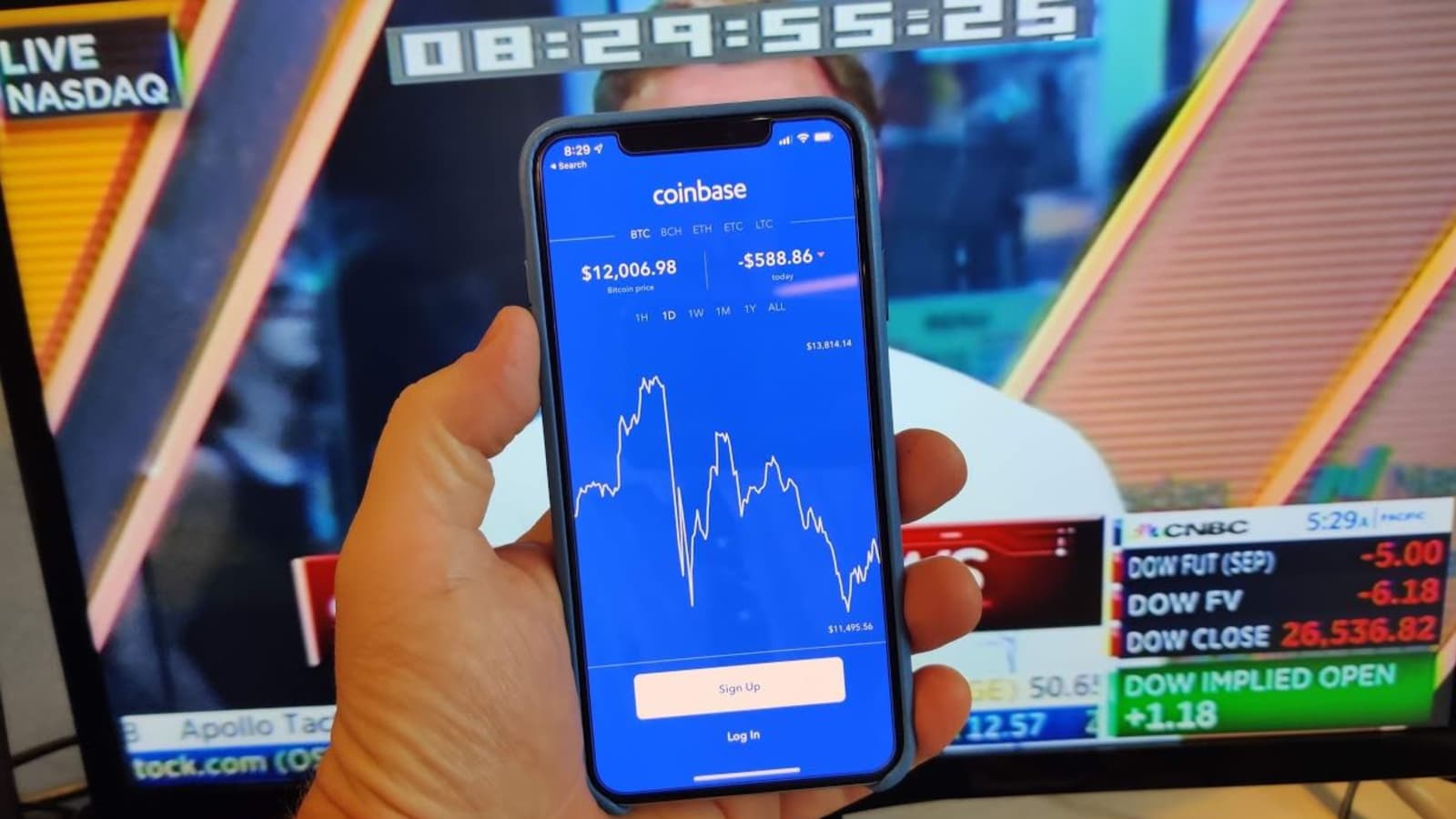Introduction
Welcome to the world of blockchain and the revolutionary concept of cryptocurrencies. Bitcoin, the most popular cryptocurrency, has gained immense popularity over the years. With its decentralized nature, transactions made with Bitcoin are securely recorded on a public ledger known as the blockchain.
However, amidst the excitement of the cryptocurrency boom, there are instances where individuals may face difficulties in accessing their Bitcoin holdings. Whether it’s due to lost passwords, stolen devices, or other unforeseen circumstances, the process of recovering Bitcoin from a blockchain can be challenging.
In this guide, we will walk you through the steps involved in recovering Bitcoin from the blockchain. While it’s important to note that this process may not always be successful, it’s worth exploring the available options to retrieve your digital assets.
Before diving into the recovery process, it’s essential to have a basic understanding of blockchain technology. The blockchain is a decentralized ledger that records all transactions made using cryptocurrencies like Bitcoin. Each transaction is stored in a “block” and linked to the previous block, forming a chain of transactions. This system ensures transparency, security, and immutability of the recorded data.
When it comes to Bitcoin recovery, the decentralized nature of the blockchain makes it challenging. Unlike traditional centralized systems where a central authority can assist in the retrieval process, blockchain operates on a peer-to-peer network with no central intermediary. Therefore, the responsibility for recovering Bitcoin from the blockchain lies primarily with the individual.
This guide aims to provide you with a step-by-step process to increase your chances of recovering your lost or inaccessible Bitcoin. However, it’s important to understand that every situation is unique, and success cannot be guaranteed. Additionally, it’s recommended to consult with professionals or seek legal advice if your recovery attempts are unsuccessful or involve complex circumstances.
Now that we have set the stage, let’s dive into the process of recovering your Bitcoin from the blockchain.
Understanding Blockchain
Before diving into the process of recovering Bitcoin from the blockchain, it’s crucial to have a clear understanding of what blockchain is and how it functions. Blockchain technology is the backbone of cryptocurrencies like Bitcoin. It is a decentralized and distributed ledger that records all transactions made using digital currencies.
At its core, a blockchain is a chain of blocks that contain transactional data. When a transaction occurs, it is grouped with other transactions and added to a block. Each block is then linked to the previous block through a cryptographic hash function. This linkage forms a chain of blocks, hence the name blockchain.
The main strength of blockchain lies in its decentralized nature. Unlike traditional financial systems, where a central authority controls and verifies transactions, blockchain relies on a peer-to-peer network of computers, also known as nodes. These nodes work together to validate transactions and maintain the integrity of the blockchain.
One of the key features of blockchain is its immutability. Once a block is added to the chain, it is nearly impossible to alter or tamper with the data recorded in it. This protects the integrity of transactions and ensures transparency and trust within the network.
Each transaction recorded on the blockchain includes important information such as the sender’s digital signature, the recipient’s digital signature, the amount transferred, and a timestamp. This information is essential for verifying the validity of transactions and maintaining an accurate and transparent ledger.
Blockchain technology also employs consensus mechanisms to validate and verify transactions. The most common consensus mechanism used in blockchain networks is Proof of Work (PoW). In PoW, miners compete to solve complex mathematical problems to add new blocks to the blockchain. Once a miner solves the problem, the block is added to the chain, and the miner is rewarded with new cryptocurrency tokens.
Understanding the fundamental principles of blockchain technology is crucial when dealing with the recovery of Bitcoin from the blockchain. The decentralized and immutable nature of the blockchain means that there is no central authority to turn to when faced with the loss or inaccessibility of your Bitcoin. You must take personal responsibility and follow specific steps to try and recover your digital assets.
With a clear understanding of how blockchain operates, let’s move on to the process of recovering Bitcoin from the blockchain.
Why Recovering Bitcoin is Difficult
Recovering Bitcoin from the blockchain can be a challenging task due to several factors. The decentralized and immutable nature of blockchain technology, which brings transparency and security, also poses obstacles when it comes to retrieving lost or inaccessible Bitcoin. Here are some reasons why recovering Bitcoin is difficult:
1. Decentralization: The decentralized nature of the blockchain means that there is no central authority or intermediary to turn to for help. Transactions are validated and recorded by a network of nodes, making it difficult to pinpoint a specific entity responsible for assisting in the recovery process. You must rely on your own resources and follow certain steps to increase your chances of recovering your Bitcoin.
2. Lost Private Keys: When you own Bitcoin, you are given a pair of cryptographic keys: a public key and a private key. The private key is essentially your ownership of the Bitcoin and is needed to access and transfer your digital assets. If you lose your private key, accessing your Bitcoin becomes nearly impossible. Without the private key, the funds associated with that key are effectively lost.
3. Irreversible Transactions: Once a transaction is added to the blockchain, it is virtually irreversible. Unlike traditional financial systems where transactions can be reversed or disputed, blockchain transactions are permanent and cannot be easily altered. If you accidentally send Bitcoin to the wrong address or fall victim to a scam, it can be extremely challenging to recover your funds.
4. Lack of Centralized Support: While there are support teams and forums available for blockchain platforms like Bitcoin, the level of direct assistance is limited. Due to the decentralized nature of blockchain, the responsibility to recover lost or inaccessible Bitcoin lies mainly with the individual. Support teams can provide guidance and advice, but the technical complexities and security measures surrounding blockchain make it difficult to provide a quick solution.
5. Security Measures: Blockchain technology relies on robust security measures to protect transactions and users’ funds. While these security measures provide a high level of protection, they can also pose difficulties when it comes to recovering Bitcoin. For instance, if you have forgotten your password or lost access to your wallet, the security measures implemented may make it challenging to regain access without the necessary credentials or recovery methods.
Considering these challenges, it’s essential to take preventive measures to avoid the loss of Bitcoin and keep your digital assets secure. Implementing strong security practices, such as securely storing private keys and regularly backing up your wallets, can significantly reduce the risk of losing access to your Bitcoin in the first place.
Now that we understand why recovering Bitcoin can be difficult, let’s move on to the step-by-step guide on how to attempt recovery.
Recovering Bitcoin from Blockchain: Step by Step Guide
If you find yourself in a situation where you need to recover Bitcoin from the blockchain, here is a step-by-step guide to help you navigate through the process:
Step 1: Gathering Information
The first step is to gather all the necessary information related to your Bitcoin transaction and wallet. This includes the transaction ID, wallet address, and any other relevant details. Take note of when the transaction took place and any additional information that may be helpful in the recovery process.
Step 2: Contacting Blockchain Support
Next, reach out to the support team of the blockchain platform your Bitcoin is stored on. Explain your situation and provide them with the gathered information. They may be able to provide guidance or direct you to the appropriate resources for recovering lost or inaccessible Bitcoin.
Step 3: Providing Required Documentation
Blockchain platforms often have specific procedures and documentation requirements for recovering lost Bitcoin. This may involve providing proof of ownership, verifying your identity, or providing any other information they may require. Be prepared to provide the necessary documentation to support your recovery claim.
Step 4: Following Up on the Status
After submitting the required documentation, be proactive in following up on the status of your recovery request. Blockchain support teams may receive a high volume of inquiries, so staying engaged and regularly communicating can help ensure that your case receives the necessary attention. Ask for updates and provide additional information if requested.
Step 5: Recovering Your Bitcoin
If your recovery request is successful, congratulations! You have recovered your Bitcoin. The process may vary depending on the blockchain platform and the specific circumstances of your recovery case. Follow the instructions provided by the support team to regain access to your Bitcoin.
If your recovery attempt is unsuccessful, do not lose hope. It’s important to exhaust all available options and seek professional help if needed. Remember, every situation is unique, and success cannot be guaranteed. Learn from the experience and take preventive measures to protect your Bitcoin in the future.
Now that you have a step-by-step guide, you are better equipped to navigate the recovery process if you ever find yourself in need of recovering Bitcoin from the blockchain.
Step 1: Gathering Information
When attempting to recover Bitcoin from the blockchain, the first crucial step is to gather all the necessary information related to your transaction and wallet. Having accurate and detailed information will significantly increase your chances of successful recovery. Here’s what you need to do:
1. Transaction ID: Locate and note down the transaction ID associated with the Bitcoin you are trying to recover. The transaction ID is a unique identifier that confirms the specific transaction on the blockchain. It can usually be found in your transaction history or on the blockchain explorer.
2. Wallet Address: Identify and record the wallet address that held the Bitcoin at the time of the transaction. Wallet addresses are alphanumeric strings that uniquely identify a particular wallet on the blockchain. Ensure that you have the correct wallet address to avoid any confusion during the recovery process.
3. Transaction Details: Take note of additional information regarding the transaction, such as the date and time it occurred, the amount of Bitcoin involved, and any relevant details that may help support your recovery claim. These details will provide important context to the support team when you reach out for assistance.
4. Backup and Recovery Phrases: If you have stored your Bitcoin in a wallet that uses a backup or recovery phrase, make sure you have access to that phrase. Backup phrases are usually a sequence of words provided during the wallet setup. They act as a backup to restore lost or inaccessible wallets. Having the backup or recovery phrase is vital if you need to restore your wallet and gain access to your Bitcoin.
5. Any Other Relevant Information: If there are any additional details or circumstances surrounding the loss or inaccessibility of your Bitcoin, gather and document them. This could include any changes you made to your device or software, recent transactions, or any other factors that may have contributed to the issue. Providing a comprehensive overview will assist the support team in understanding your situation better.
By diligently gathering all the necessary information, you are laying a solid foundation for your recovery efforts. This information will be invaluable when contacting the support team or seeking assistance in the recovery process. Remember to keep this information stored securely and easily accessible, as you may need to refer to it throughout the recovery journey.
Step 2: Contacting Blockchain Support
After gathering all the necessary information pertaining to your Bitcoin recovery, the next step is to reach out to the support team of the blockchain platform where your Bitcoin is stored. Contacting blockchain support is essential as they can provide guidance, resources, and assistance in your recovery efforts. Here’s what you need to do:
1. Find Contact Information: Locate the official channels for contacting the support team of the blockchain platform. This information can usually be found on the platform’s website or in their documentation. Look for contact forms, email addresses, or support ticket systems that you can use to reach out to them.
2. Explain Your Situation: Clearly and concisely explain your situation to the support team. Provide them with the gathered information from Step 1, including the transaction ID, wallet address, and any other relevant details. Briefly describe the issue you are experiencing and the specific assistance you require for recovering your Bitcoin.
3. Be Polite and Patient: Remember to be polite and patient when communicating with the support team. Understand that they may receive a high volume of inquiries and might take some time to respond. Politeness and patience can go a long way in fostering a positive and cooperative relationship with the support team.
4. Follow Instructions: If the support team requests additional information or provides instructions, carefully follow their guidance. They may ask for specific documentation, identification verification, or other details necessary for the recovery process. Be prompt in providing the requested information to avoid delays in your recovery efforts.
5. Document Communication: Keep a record of all your communication with the support team. Take note of the date and time of each interaction, the name or ID of the support representative you were in contact with, and any important details discussed. This documentation will be useful for future reference and can serve as evidence in case of any complications.
Remember, the support team is there to assist you, but they may have certain limitations or procedures in place. While they will strive to provide the best support possible, it’s important to manage your expectations and understand that not all recovery requests may be successful. Stay positive and maintain open lines of communication to increase your chances of a favorable outcome.
Contacting the blockchain support team is a vital step in your Bitcoin recovery journey. Utilize the official channels available to you and ensure that you provide them with all the necessary information and documentation to support your case.
Step 3: Providing Required Documentation
Once you have contacted the support team of the blockchain platform and explained your situation, the next step in recovering your Bitcoin is to provide any required documentation. Blockchain platforms often have specific procedures and documentation requirements for verifying ownership and assisting in recovery. Here’s what you need to do:
1. Review Documentation Guidelines: Familiarize yourself with the documentation guidelines provided by the support team. They may have specific requirements or instructions regarding the types of documents they accept and the format they prefer. Take the time to understand these guidelines to ensure you meet their criteria.
2. Proof of Ownership: In most cases, you will need to provide proof of ownership of the Bitcoin you are attempting to recover. This can be done by sharing transaction records, wallet addresses, or any other evidence that establishes your ownership of the Bitcoin in question. Compile all relevant proof of ownership documents as instructed by the support team.
3. Identification Verification: In order to protect against fraudulent claims, blockchain platforms often require identity verification. You may need to provide a copy of your identification document, such as a passport or driver’s license. Follow the instructions provided by the support team on how to securely submit your identification verification documents.
4. Additional Supporting Documents: Depending on your specific circumstances, the support team may request additional documents to support your recovery claim. These could include screenshots, transaction history, backup/recovery phrases, or any other information that helps authenticate your ownership and further clarify the issue you are facing.
5. Double-Check Information: Before submitting the required documentation, review all the information and documents to ensure accuracy and completeness. Any errors or missing information could potentially slow down the recovery process. Take your time to double-check and ensure that everything is in order before submitting.
6. Secure Document Submission: Follow the secure document submission process outlined by the support team. They may provide a specific portal, email address, or forms for submitting your documents. Encrypt any sensitive information and use secure file transfer methods to protect your data during transmission.
By providing the required documentation accurately and promptly, you are demonstrating your commitment and cooperation in the recovery process. These documents will help the support team assess your case and verify your ownership, increasing your chances of a successful recovery.
Keep a record of all the documentation you submit, including timestamps and confirmation receipts, for your reference. This will help you track the progress of your recovery request and provide necessary evidence if there are any complications or concerns.
Be sure to maintain open communication with the support team throughout this process. If they require any clarification or additional documents, respond promptly to avoid unnecessary delays. Your cooperation and thorough documentation will greatly aid in the recovery of your Bitcoin.
Step 4: Following Up on the Status
After submitting the required documentation for recovering your Bitcoin from the blockchain, it’s important to stay proactive and follow up on the status of your recovery request. Blockchain support teams may receive a high volume of inquiries, and staying engaged in the process can help ensure that your case receives the necessary attention. Here’s what you need to do:
1. Keep Track of Communications: Maintain a record of all communication with the support team. Note down the dates, times, and details of each interaction. This documentation will help you keep track of the progress and provide a reference if required.
2. Be Patient: Recovery requests can take time due to the complexity of the verification process and the volume of inquiries received. Exercise patience and understand that your case will be addressed in the order it was received. Avoid sending multiple follow-up messages in a short span of time, as this may delay the resolution process.
3. Ask for Updates: If a significant amount of time has passed since your initial submission, you can politely reach out to the support team and ask for an update on the status of your recovery request. Inquire about any additional information they may need or if there are any specific steps you can take to expedite the process.
4. Provide Additional Information, if Necessary: In some cases, the support team may require additional information or clarification relating to your recovery request. Respond promptly and provide any requested information to avoid unnecessary delays. Clear and timely communication is key to facilitating a smooth and efficient recovery process.
5. Understand Timing and Expectations: Recovery requests can vary in terms of timeframes and outcomes. Set realistic expectations and understand that the resolution process may take some time. Keep in mind that not all recovery attempts are successful, and the support team will do their best to assist you within their capabilities.
6. Seek Professional Help, if Necessary: If your recovery request remains unresolved or you encounter complex issues, you may consider seeking professional assistance. Professional blockchain recovery services are available and may have specialized expertise in dealing with complex recovery scenarios. Evaluate their reputation and reviews before engaging their services.
Remember to approach all interactions with the support team respectfully and professionally. Politeness and understanding can go a long way in establishing a positive working relationship and increasing the likelihood of a favorable resolution.
By following up on the status of your recovery request, you demonstrate your commitment and dedication to reclaiming your lost or inaccessible Bitcoin. Stay engaged in the process and maintain open lines of communication to enhance your chances of a successful recovery.
Step 5: Recovering Your Bitcoin
After going through the necessary steps of contacting support, providing documentation, and following up on the status, it’s time to focus on the final step: recovering your Bitcoin from the blockchain. While success cannot be guaranteed, here are some key considerations to keep in mind:
1. Await Confirmation: Once the support team has reviewed your documentation and verified your ownership, they will notify you of the outcome. Be patient and wait for their confirmation before proceeding with the recovery process.
2. Follow Instructions: If your recovery request is successful, the support team will provide you with instructions on how to regain access to your Bitcoin. Carefully follow their guidance and adhere to any additional security measures they may have in place. This will help ensure a smooth and secure recovery process.
3. Secure Your New Wallet: If you are using a new wallet to access your recovered Bitcoin, take the necessary steps to secure it. Set a strong, unique password and enable two-factor authentication to enhance the security of your funds. Consider backing up your new wallet to ensure you won’t face similar issues in the future.
4. Be Prepared for Possible Limitations: Depending on the circumstances surrounding the recovery, there may be certain limitations or conditions imposed by the support team. This could include restrictions on the use of the recovered Bitcoin, additional verification procedures, or other security measures. Familiarize yourself with these limitations and comply with them to avoid any potential disruptions.
5. Learn from the Experience: Going through the process of recovering your Bitcoin can be a valuable learning experience. Take the opportunity to evaluate the security practices you followed before the loss or inaccessibility occurred. Identify any areas for improvement and implement stronger measures to protect your digital assets in the future.
6. Share Your Story: If you successfully recover your Bitcoin, consider sharing your story and the lessons you learned with others in the cryptocurrency community. Your experience may help prevent others from making similar mistakes or provide valuable insights to those who are facing similar challenges.
Remember, the recovery of Bitcoin from the blockchain is not always guaranteed, and each case is unique. It’s important to remain cautious and implement robust security measures to avoid future losses or inaccessibility of your digital assets.
If your recovery request is unsuccessful, try not to get discouraged. Seek professional advice or consult with experts in the field who may have specialized knowledge and experience in blockchain recovery. They may be able to offer alternative solutions or strategies to help you in your specific situation.
Recovering your Bitcoin from the blockchain requires patience, persistence, and careful adherence to the guidance provided by blockchain support. With the right approach and a bit of luck, you may be able to reclaim your lost or inaccessible Bitcoin and regain control of your digital assets.
Tips for Preventing Future Loss or Recovery Issues
Recovering Bitcoin from the blockchain can be a complex and uncertain process. To avoid future loss or the need for recovery, it’s important to implement strong security practices and take preventive measures. Here are some essential tips to keep in mind:
1. Backup Your Wallet: Regularly backup your wallet and securely store the backup in multiple locations. This will ensure that you have a copy of your wallet’s private keys or recovery phrase, which can be used to restore your wallet in case of loss or hardware failure.
2. Use Strong and Unique Passwords: Set strong and unique passwords for your wallets and any online accounts associated with your Bitcoin. Avoid reusing passwords and consider using a password manager to securely store and generate complex passwords.
3. Enable Two-Factor Authentication: Activate two-factor authentication (2FA) wherever possible. This additional layer of security requires you to provide a second form of verification, such as a code sent to your mobile device, in addition to your password when accessing your accounts.
4. Update Your Software: Stay up to date with the latest software updates and security patches for your wallets, devices, and operating systems. Regularly updating your software helps protect against vulnerabilities that attackers may exploit.
5. Be Cautious with Third-Party Services: Exercise caution when using third-party platforms or services related to Bitcoin. Choose reputable providers and thoroughly research their security practices. Be wary of scams, phishing attempts, and suspicious websites that may lead to the compromise of your Bitcoin.
6. Educate Yourself: Stay informed about the latest security threats and best practices in the cryptocurrency space. Educate yourself on topics such as wallet security, safe transaction practices, and ways to identify potential risks. Knowledge is your best defense against potential pitfalls.
7. Diversify Your Storage: Consider using multiple wallets or storage solutions to diversify your Bitcoin holdings. This reduces the risk of losing all your Bitcoin in case of a single point of failure or an unforeseen event.
8. Test Recovery Processes: Familiarize yourself with the recovery processes of your wallets and practice restoring your wallets using the provided backup or recovery phrases. This will ensure that you know how to recover your Bitcoin in case of an emergency or accidental loss of access.
9. Stay Vigilant: Continuously monitor your accounts, transactions, and balances. Regularly review your wallet activity, and promptly report any suspicious or unauthorized transactions to the respective platform’s support team.
10. Seek Professional Assistance, if Needed: If you are uncertain about handling your Bitcoin securely or have experienced significant loss or issues, consider seeking professional advice or assistance from experts in the field. They can provide specialized guidance and help navigate complex recovery situations.
Implementing these tips will significantly reduce the risk of future loss or the need for recovery. By taking proactive steps to secure your Bitcoin holdings and staying informed about the evolving security landscape, you can have greater peace of mind and confidence in managing your digital assets.
Conclusion
Navigating the process of recovering Bitcoin from the blockchain can be challenging and uncertain. The decentralized nature of blockchain technology, irreversible transactions, and the lack of centralized support pose obstacles in retrieving lost or inaccessible Bitcoin. However, by following the steps outlined in this guide, you can increase your chances of recovering your digital assets.
It is important to gather all the necessary information, contact the blockchain support team, provide the required documentation, and follow up on the status of your recovery request. Be patient, cooperate with the support team, and understand that successful recovery cannot be guaranteed in all cases.
Prevention is always better than recovery. Take proactive measures to secure your Bitcoin by backing up your wallet, using strong and unique passwords, enabling two-factor authentication, and staying up to date with software updates. Exercise caution when using third-party services and educate yourself on best security practices in the cryptocurrency space.
In the event of a successful recovery, ensure that you secure your new wallet and learn from the experience to prevent future loss or recovery issues. Share your story with others in the community to help them avoid similar pitfalls.
If your recovery attempts are unsuccessful or if you encounter complex issues, consider seeking professional assistance from blockchain recovery experts who can provide specialized knowledge and guidance.
Remember, the process of recovering Bitcoin from the blockchain requires diligence, patience, and a thorough understanding of the technology. By being proactive in protecting your digital assets and taking prompt action when faced with loss or inaccessibility, you can improve your chances of regaining control over your Bitcoin.
Stay informed, stay vigilant, and always prioritize the security of your cryptocurrency holdings to ensure a smooth and secure journey in the world of blockchain and digital assets.









